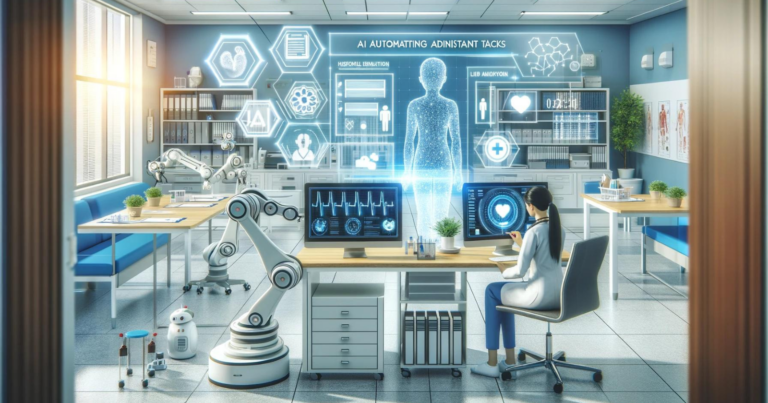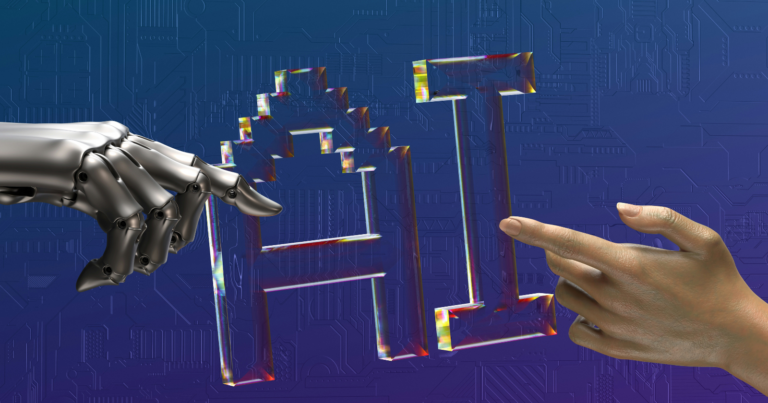Getting Started with AI Automation
Have you ever wondered how technology could make your life and work easier? Welcome to the world of AI automation where endless possibilities to enhance efficiency are at your fingertips! Imagine a workplace where routine tasks are no longer your burden, thanks to the power of artificial intelligence (AI) working around the clock. Isn’t it thrilling to think that you can focus on more creative and strategic tasks while AI tackles the repetitive ones?
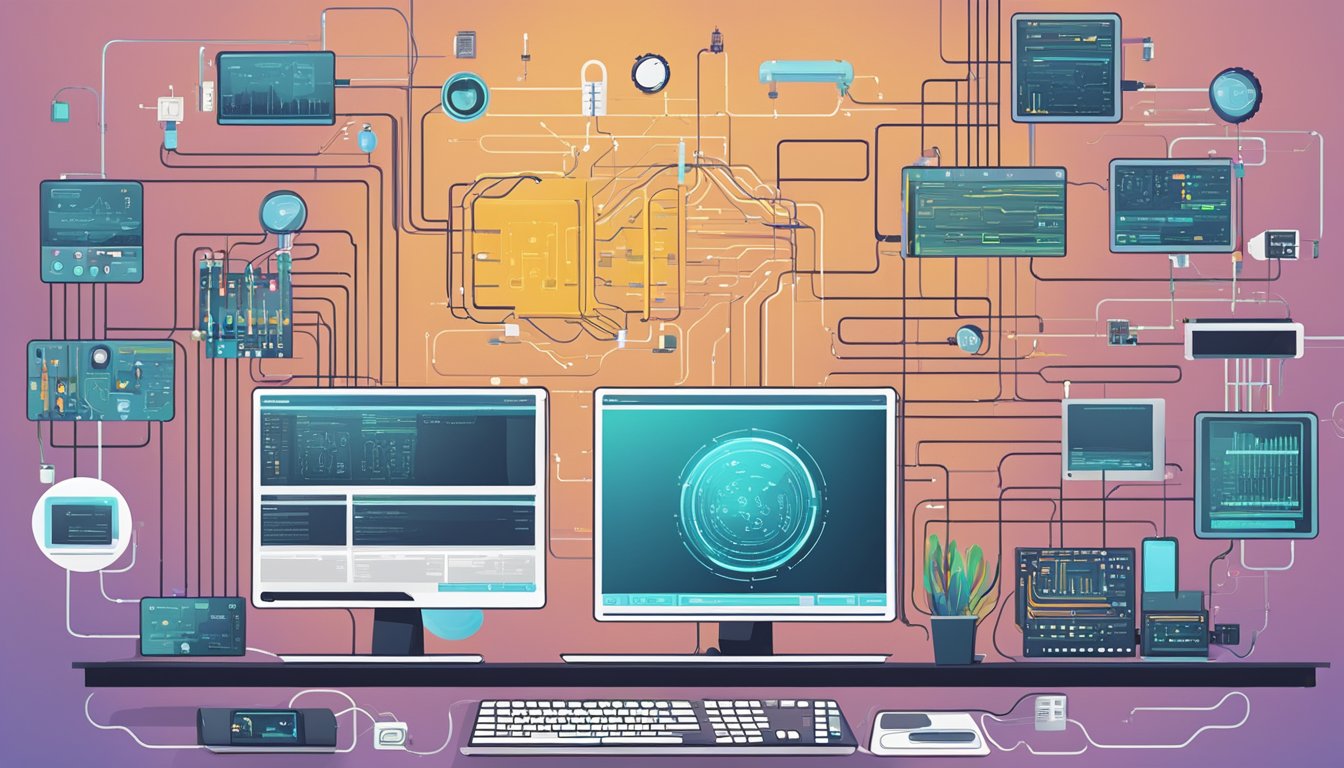
Getting into AI automation might sound like you need a tech-savvy background, but it’s simpler than you think. Essentially, AI automation utilizes advanced AI technologies and algorithms to perform tasks that traditionally require human intervention. It’s about teaching computers to do the work for us, and doing it faster and with fewer errors. From processing large volumes of data to scheduling your meetings, AI is changing the game in every industry.
But how exactly does one start leveraging AI automation? It’s all about understanding your needs and exploring practical applications that fit seamlessly into your daily operations. Whether it’s automating customer service through chatbots or streamlining your email marketing campaigns, AI has use cases that can benefit anyone. Remember, the goal here is not just to work harder, but to work smarter. By harnessing AI, you’re not just upgrading your toolkit; you’re setting the stage for a more dynamic and innovative working environment. Are you ready to take the leap into the future of productivity? The power of AI automation is waiting for you to unlock its potential.
Understanding AI and Automation
Before diving into the intricate world of AI and automation, it’s crucial to grasp the fundamental concepts and historical milestones. After all, understanding the basics is your springboard into this revolutionary field!
Defining AI and Automation
What’s all the buzz about artificial intelligence (AI) and automation? Simply put, AI is like the brainy kid in class – it mimics human intelligence, learning from experiences and making decisions. Automation, on the other hand, is the trusty workhorse – it’s about making things happen automatically, without constant human guidance. When these two team up, you get AI automation, which is about smart machines getting tasks done, learning, and improving over time.
Historical Context and Evolution
Now, let’s step into our time machine and zoom back a few decades. AI isn’t a newborn; it’s been growing since the mid-20th century, evolving from basic algorithms to machines that outsmart humans at chess! Automation has its roots in the industrial revolution, where it started with mechanical looms. Over time, as tech got smarter and computers shrunk from room-size to palm-size, AI and automation began to tango together. This combo is now transforming industries by making them more efficient than a caffeine-powered office on a Monday morning!
The Benefits of AI Automation in Business

You’re about to embark on an exciting journey where you’ll discover how AI automation is changing the game for businesses like yours. Think success, streamlined operations, and a healthier bottom line!
Enhancing Efficiency and Productivity
Have you ever wished you could get more done in less time? AI automation transforms business processes by taking over repetitive tasks and freeing your team to focus on more complex projects. Imagine a world where your company’s productivity skyrockets because machines and algorithms are handling the grunt work. For instance, AI-driven process automation can enhance efficiency and speed, giving you a competitive edge.
Cost Reduction and Revenue Growth
Trimming costs while boosting income sounds like a dream, right? But here’s the kicker: AI automation makes it a reality. By automating routine tasks, you not only save on labor costs but also reduce the risk of human error. Plus, with AI’s insights, your business can target areas ripe for expansion and harness growth opportunities. This magic combo means more money in the bank to reinvest in your company’s future.
Improving Decision-Making and Strategies
In the game of chess, the best players think several moves ahead. With AI automation, you can bring this strategic foresight into your business. Get ready for advanced analytics and machine learning algorithms to supercharge your decision-making, offering insights that help refine your strategy and outmaneuver the competition. Better decisions lead to better outcomes, which in a nutshell, means success.
And there you have it! Isn’t AI automation just the ace up your sleeve you’ve been looking for? With these upgrades to your business, you’re not just surviving in the modern market—you’re thriving.
AI Automation Technologies and Tools
Keen to get started with AI Automation? You’ve got a world of technologies and tools at your fingertips that can transform how you work. Let’s jump right into the specifics of what tools like Zapier and Microsoft Automate offer, how bots and machine learning can leverage your business, and the role of machine vision and robotics in automation.
Exploring Tools like Zapier and Microsoft Automate
Zapier and Microsoft Automate are the dynamic duo when it comes to AI automation for business processes. With Zapier, you can weave together over 2,000 web applications to automate tasks. Have you ever dreamed of linking your Gmail to Slack so you’re notified about important emails? Zapier makes it happen without a single line of code. On the other hand, Microsoft Automate (formerly known as Flow) brings AI to your favorite Microsoft applications. Imagine creating automated workflows between Microsoft Outlook and Teams – pure efficiency magic!
Leveraging Bots and Machine Learning
When it comes to bots and machine learning, think smart and think scale. Bots aren’t just about mimicking human chat anymore; they’re smart enough to facilitate customer support, thanks to machine learning algorithms. A bot can handle the surge in customer queries like a pro, learning from interactions to get better over time. Remember, the goal is not to replace humans but to amplify their efforts, freeing up time for tasks that require a personal touch.
Understanding Machine Vision and Robotics
Finally, let’s talk about machine vision and robotics – they aren’t just for Sci-Fi movies. They’re here and increasingly accessible. Machine vision gives eyes to computers and robots, allowing them to analyze and process visual information. It’s revolutionizing industries from manufacturing to healthcare. Robotics, powered by AI, isn’t far behind. Whether it’s a robot arm assembling cars with precision or a drone surveying crops for disease, artificial intelligence brings in unmatched efficiency and accuracy.
Excited to dive in yet? These tools and technologies are shaping a future that’s not just automated but intelligent. Your journey in AI Automation begins now, and it promises to be an exciting one!
Integrating AI into Various Business Departments
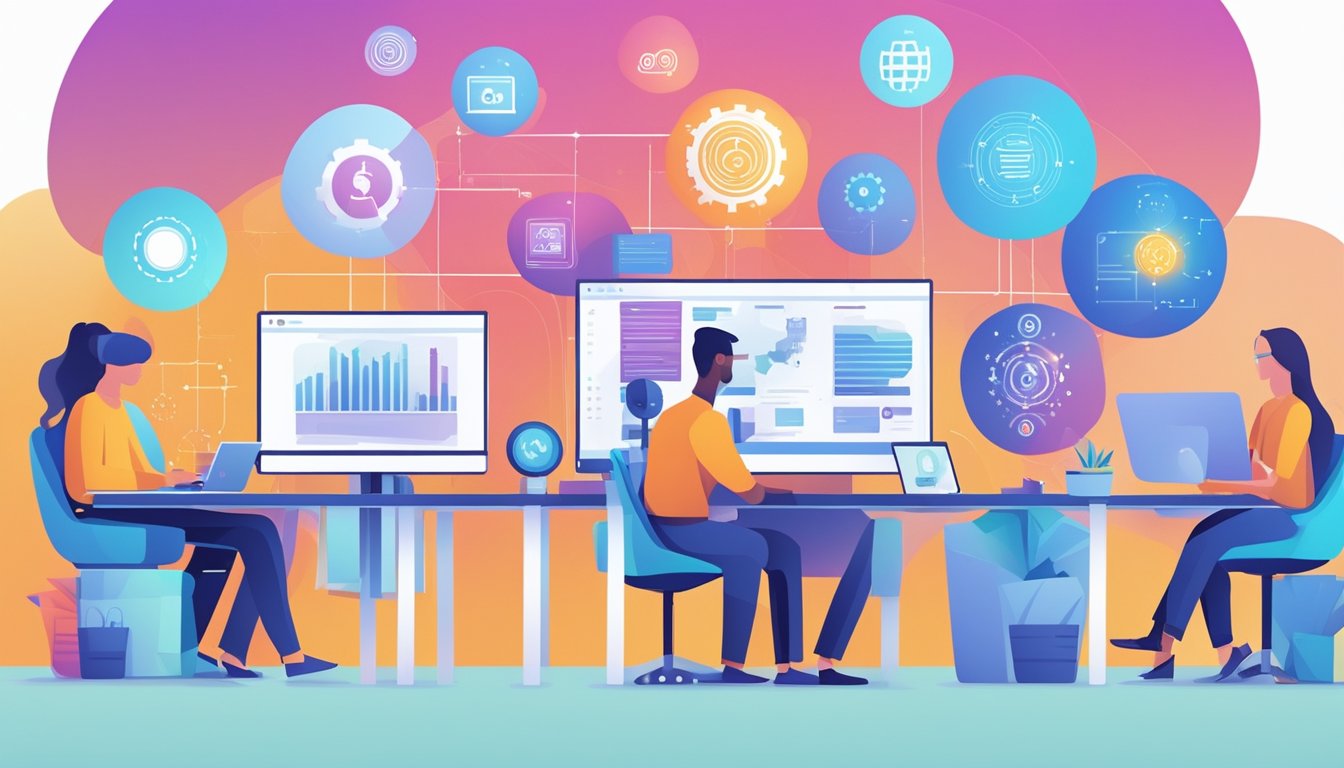
Embracing AI technology in business means empowering your teams with smarter tools. Let’s explore how AI can spruce up key departments, boosting efficiency and enhancing decision-making.
Customer Service and Support
Customer service and support are the frontline of your business, where first impressions are made. Imagine AI chatbots handling routine inquiries, learning from interactions to provide more personalized support. This leaves you more time to tackle complex customer issues. Reducing wait times and increasing satisfaction becomes the norm with AI sorting customer requests, and predicting common issues before they escalate.
Sales and Marketing
In sales and marketing, AI is like having a crystal ball. Data analytics and predictive modeling can pinpoint trends, helping tailor campaigns to the right audience at the right time. For sales, this means lead scoring can be automated, quickly identifying the hottest prospects. And on the marketing side, AI-powered tools track and analyze customer behavior, refining your strategy with laser precision.
Accounting and HR
Who enjoys spending hours on accounting? With AI, expense reports can practically write themselves, and real-time analytics provide a clear picture of your financial health. Over in HR, AI helps with recruiting by vetting through hundreds of applications to find the perfect match. Payroll and benefits management also get an AI overhaul, reducing errors and ensuring compliance.
Practical Applications of AI Automation
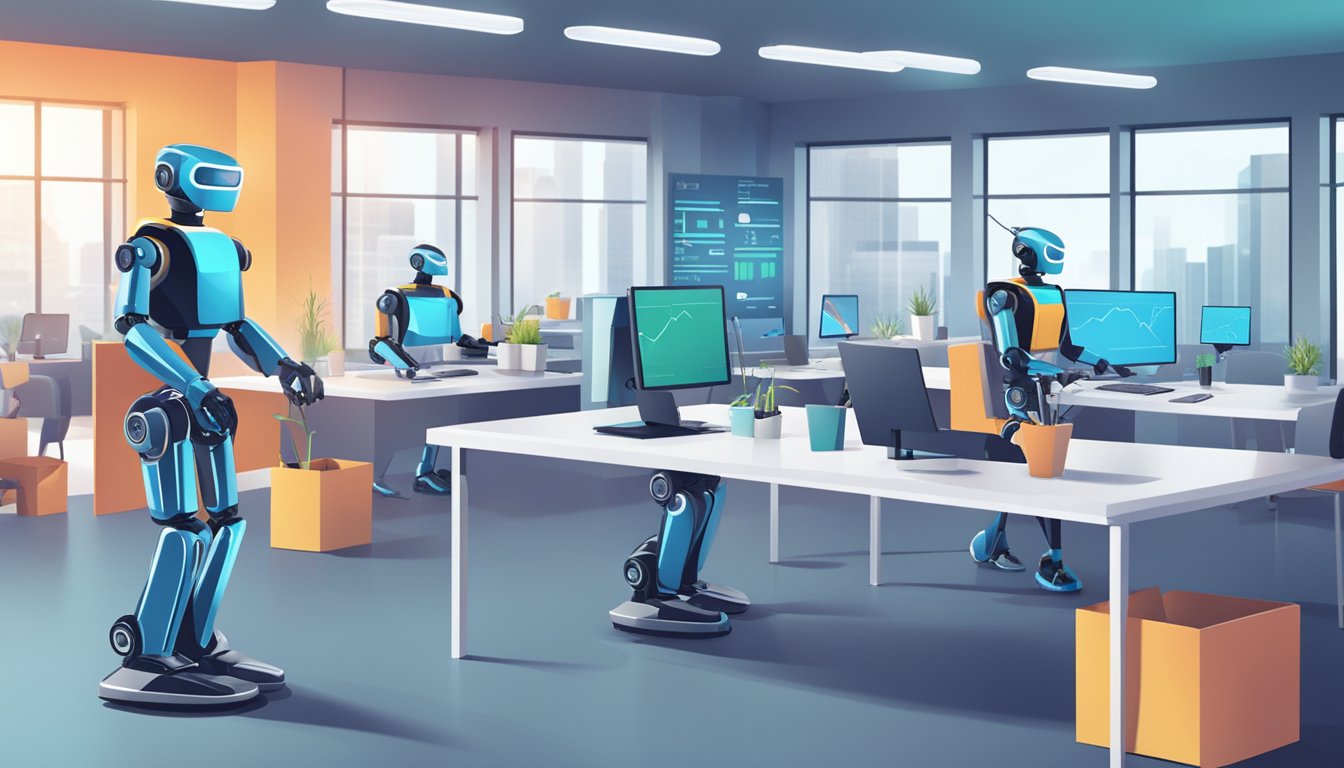
Before we dive into the exciting world of AI automation, let’s highlight a few cool applications. Think of these as the superheroes in the tech universe, aiding businesses like yours to serve customers better, generate valuable leads, and make interactions smoother with voice and chat systems.
E-commerce and Lead Generation
Do you ever wonder how e-commerce sites seem to know exactly what you want? AI automation is the secret sauce! For starters, AI boosts e-commerce by predicting customer preference and suggesting personalized product recommendations. This not only enhances the shopping experience but also increases the likelihood of turning browsing into buying.
When it comes to lead generation, AI is like a super-smart magnet. By analyzing customer data, AI helps in identifying potential leads that match your ideal customer profile. This means you’re focusing on high-quality leads with a better conversion chance. Talk about hitting the bullseye, right?
Five Practical Applications Of AI In Automation – Forbes
Voice Assistants and Chat Systems
Ever chatted with a customer service bot? That’s AI at work! Voice assistants and chat systems are like your ever-ready, always-awake customer service reps. They use natural language processing (NLP) to understand and respond to customer queries—day or night. This can really up your customer service game by offering instant help and reducing wait times, which customers absolutely love!
These AI systems get smarter over time, learning from each interaction to provide even sharper responses in the future. It’s like having a team member who constantly evolves and never needs a coffee break.
What Is AI Automation? – Upwork
Case Studies and Real-World Examples
Let’s bring in some proof from the real world, shall we? Case studies show that AI automation is not just hype; it’s changing the game in industries across the board. For instance, some manufacturers have seen production upticks by integrating AI to optimize their supply chains.
And then there are examples like health tech firms using AI to predict patient’s health trends, leading to better care and outcomes. By looking at these real-world examples, you’re not just taking a leap of faith; you’re following in the footsteps of those who’ve successfully navigated the AI landscape.
A Beginner’s Guide for Artificial Intelligence in Automation
Now that you’ve got a glimpse of AI’s practical powers in automation, just imagine what it can do for your business. Time to get excited and take the next step into your AI adventure!
Building and Training Your AI Automation Team

Are you ready to gear up your business with AI automation? Great! The success of your journey largely depends on the people who will blaze the trail. Let’s talk specifics on assembling your dream team and getting them ready to roll!
Recruiting AI Experts and Training Staff
Your first step is to scout for AI Experts—the knights in shining armor for your AI endeavors. But where do you find these tech-savvy warriors? Hit up HR and work on job listings that highlight the need for skills in machine learning, data analytics, and experience with AI tools. Consider roping in Business Development Representatives (BDRs) and Account Executives (AEs) who can help identify the talent that can transform your business processes.
Once you’ve gathered your brains trust, it’s training time! Investing in thorough training is a must. Get your team comfortable with Python, the lingua franca of AI, and familiarize them with platforms like OpenAI for maximum creativity and efficiency.
Developing Effective AI Teams
Developing effective AI teams isn’t just about grouping individuals together. It’s about creating a cog in the machine that works better than its parts. Begin by clearly defining roles and responsibilities. Who’s designing the algorithms? Who’s refining the data? Who’s in charge of keeping the AI in check?
Remember, the strength of a team lies in collaboration. Encourage team building activities that foster communication and trust. Regular knowledge-sharing sessions can be a goldmine for innovation and ensure that every member is up to speed. Make your meetings a safe space for brainstorming – after all, the next trailblazing idea might just come from the person you least expect!
By carefully selecting and skillfully training your team, you’re setting up a robust foundation for AI automation that can propel your company to new heights. Keep the dialogue flowing, the training relevant, and the teamwork dynamic, and you’ll be well on your way to achieving AI automation success.
Scaling Your Business with AI Automation
Embracing AI automation can be a game-changer for scaling your business, not just for its ability to streamline workflows, but also for the insights and agility it brings to the table.
Managing Growth and Workflows
So, you’ve got a growing enterprise on your hands—congrats! Now, how do you keep the momentum going? First things first, let’s talk about managing those workflows. By automating across all your applications, you can handle an increase in workload without a proportional increase in stress or staffing. Imagine having an AI system that can:
- Map your processes: Understand the nitty-gritty of your current workflows.
- Identify automation opportunities: Zero in on tasks where AI can make a significant impact.
It’s like having a GPS for optimization—know where you are, and the smartest route to where you want to be!
Monitoring Performance and Iterating
Got your AI tools in place? Brilliant! But don’t just set and forget. To truly scale, you need to monitor performance and iterate. Think of your AI as a diligent team member that requires regular performance reviews:
- Create a measurement framework: Establish clear KPIs and track them consistently.
- Use feedback to iterate: Like a chef tasting and tweaking their recipe, use the data to refine your automation strategies for peak performance.
By staying on top of this, you’re not just growing; you’re evolving. And that’s how you build a business that doesn’t just ride the waves of growth but directs the tide.
Staying Informed and Current
Keeping up with the rapid pace of AI automation requires staying informed about the latest trends, resources, and networks. Jump into the world of AI knowing exactly where to find the most recent and relevant information.
Learning Resources and Courses
Ever wondered where you can pick up the skills to stay ahead in the AI game? Starting with learning resources and courses is like finding a treasure map to success! Online platforms like DataCamp offer comprehensive guides on AI, tailored to the current year. For instance, their guide on How to Learn AI from Scratch in 2024 is a treasure trove of knowledge for budding AI enthusiasts. If you’re near Boston, you may also explore local university courses or the Association for Advancing Automation for specialized training.
Conferences and Networking
Ever been to a conference and felt that electric buzz of ideas zapping through the air? That’s where the magic happens! Conferences are the go-to gathering spots for industry professionals, and opportunities to dive deep into AI’s latest advancements. Swing by conferences such as those hosted in Boston, where you can mingle with peers, thought leaders, and innovators.
Whitepapers, Videos, and More
Hungry for knowledge? Be sure to snack on whitepapers and videos—the comfort food for your tech-savvy soul. They’re often packed with insights and analyses that can give you the edge. Videos can be particularly engaging and make complex concepts easier to digest. You can find valuable educational content from trusted industry sources that will keep your AI automation buffet well-stocked.
Frequently Asked Questions
Embarking on the fascinating journey of AI automation? Let’s tackle some common queries that can help you navigate through the beginnings of artificial intelligence.
What are some recommended resources for beginners looking to learn about AI?
For those of you itching to dive into the world of AI, a treasure trove of resources awaits. A solid start is the A3 Beginner’s Guide for Artificial Intelligence in Automation, which provides an excellent briefing from AI experts on top use-cases in manufacturing.
What is a step-by-step approach to starting out in artificial intelligence?
Beginning your journey in AI might feel like scaling a mountain, but don’t worry, it’s one step at a time. First, hone the basics of computer science, then familiarize yourself with machine learning, and finally, deepen your skills in a specific area of AI that intrigues you the most.
How can one integrate Python when beginning their journey in learning AI?
Python is like the Swiss Army knife of programming when it comes to AI. Kickstart your journey by mastering Python basics through courses or tutorials and then, apply your coding prowess to AI projects by utilizing Python’s extensive libraries like TensorFlow or PyTorch.
Can you suggest any AI tools that are essential for newcomers in the field?
Absolutely, you’ll need some handy tools in your AI toolbox! Beginners should explore automated machine learning platforms like AutoML that simplify the model-building process. Also, keep an eye on data wrangling tools, as clean data is key in AI.
What are the initial steps for someone with no experience to start a career in AI?
Starting from scratch? Begin by building strong foundations in math and programming. Then, get your feet wet with online courses or bootcamps that emphasize practical AI applications. And don’t forget, networking can often be your golden ticket into the industry.
How can AI automation be effectively implemented for someone just entering the industry?
For AI starters, the implementation of automation should be a gradual process. Begin with understanding the AI and automation user guides, embrace small projects to learn the ropes, and progressively work towards complex solutions that require deeper knowledge and expertise.


